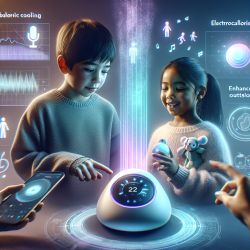In the ever-evolving landscape of special education, practitioners are continually seeking effective strategies to support children on the autism spectrum. A recent study titled "Basic emotion recognition of children on the autism spectrum is enhanced in music and typical for faces and voices" offers insightful findings that can be instrumental in improving emotion recognition skills among these children. This blog post will delve into the study's outcomes and provide practical tips for implementing these findings in educational settings.
Understanding the Study
The research conducted by Sivathasan et al. (2023) compared the emotion recognition (ER) abilities of children on the autism spectrum (AS) with typically-developing (TD) children using three types of stimuli: music, faces, and voices. The study revealed that children on the AS demonstrated enhanced ER when using musical stimuli, whereas their ER abilities were comparable to TD children when using facial and vocal stimuli.
Key Findings
The study highlighted several important points:
- Children on the AS showed a relative strength in recognizing emotions through music.
- ER accuracy in faces and voices was comparable between AS and TD children.
- Both groups had higher ER accuracy from voices, but TD children performed better with faces than music.
Implementing Research Findings in Practice
To leverage these findings in your educational practice, consider the following strategies:
Incorporate Music Therapy
Music therapy has been shown to improve social interaction and communication skills in children on the AS. By integrating music therapy sessions into your curriculum, you can help enhance their ER abilities.
Use Music in Classroom Activities
Incorporate musical elements into daily classroom activities. Use songs to convey different emotions and encourage children to identify and discuss the emotions expressed in the music.
Strength-Based Approach
Focus on the strengths of children on the AS by using music as a medium for teaching and reinforcing emotional concepts. This approach can make learning more engaging and effective.
Professional Development
Stay updated with the latest research and best practices in music therapy and emotion recognition by attending conferences, webinars, and reading relevant publications. Networking with other professionals can also provide valuable insights and resources.
Encouraging Further Research
While the study provides a strong foundation, it is essential to continue exploring and understanding the nuances of emotion recognition in children on the AS. Encourage your team to engage in further research and share findings with the broader educational community.
Conclusion
The study by Sivathasan et al. (2023) offers valuable insights into the ER abilities of children on the AS, particularly their enhanced recognition through music. By incorporating music therapy and a strengths-based approach, practitioners can significantly improve the emotional and social skills of these children. To read the original research paper, please follow this link:
Basic emotion recognition of children on the autism spectrum is enhanced in music and typical for faces and voices.










